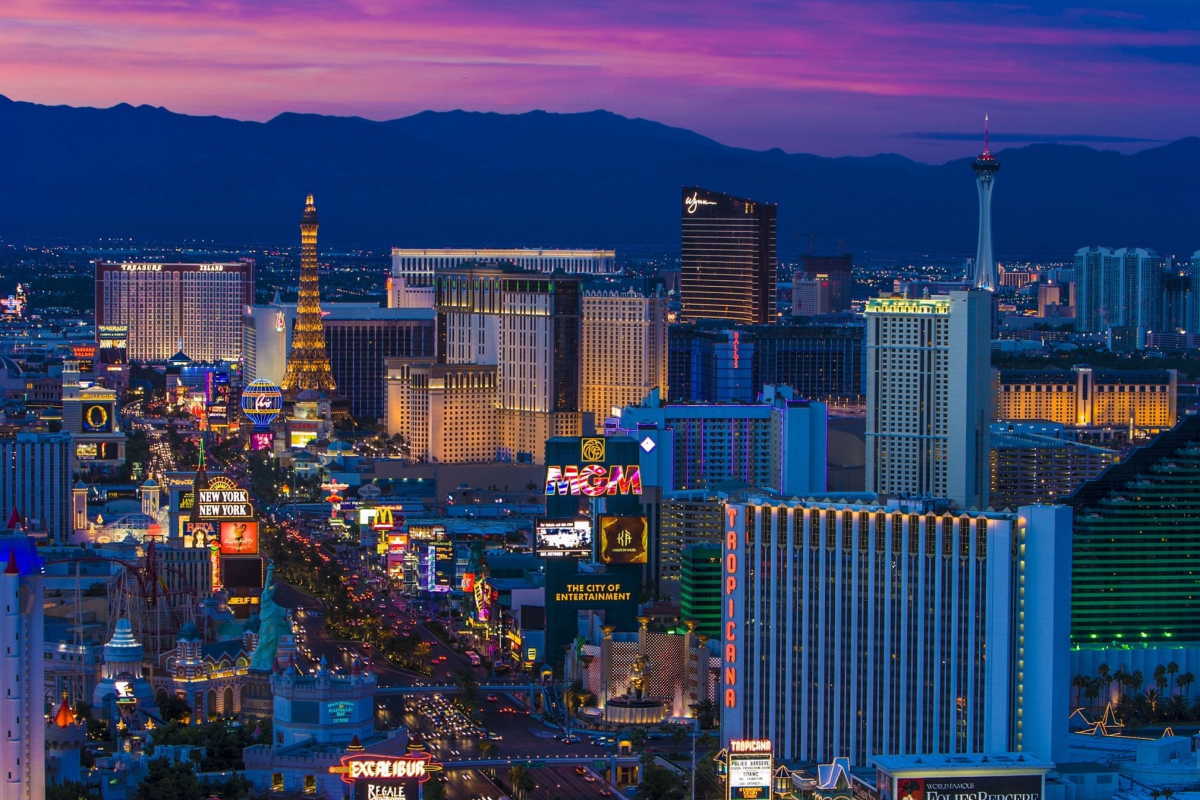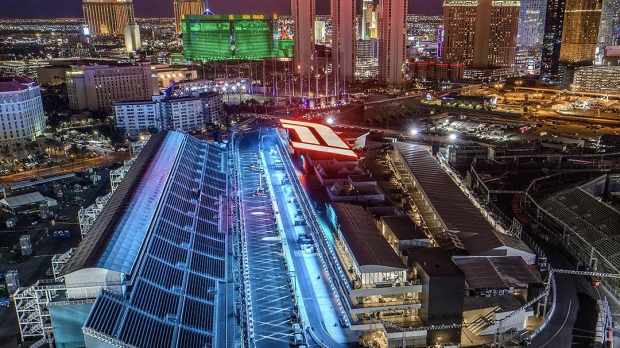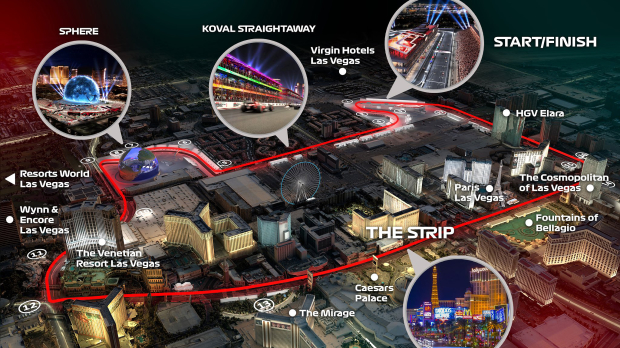Las Vegas Grand Prix: A detailed look at the 6.2km F1 street circuit

It is time for a detailed look at the track layout for the spectacular 6.2-kilometre, 17-turn street circuit which will host the Las Vegas Grand Prix this month.
The Las Vegas GP was last held in 1982 in the parking lot of the Caesars Palace Hotel and Casino, but this time the new track will pass through the world-famous landmarks in Sin City.
The circuit was designed by Tilke Engineers & Architects, founded by Hermann Tilke, a former racing driver and legendary circuit designer.
Tilke has designed several F1 circuits, including the Red Bull Ring, the Circuit of the Americas (COTA), and the Marina Bay Street Circuit. However, his son, Carsten Tilke, is the mastermind behind the Las Vegas Strip track design.
The construction cost of the circuit is estimated to be around $500 million, and it is expected to generate over $1 billion in economic benefits for the city.
Las Vegas Strip Circuit – Track Layout
The 6.201-kilometre street circuit is a thrilling neon-fueled ride that takes drivers through the heart of Sin City.
The circuit runs anticlockwise, featuring 17 corners and a 1.92km straight, making it one of the fastest tracks on the F1 calendar, with average speeds set to be comparable to Italy’s Autodromo Nazionale Monza.
The start/finish line and turns 1 to 4 are situated in a former parking lot that F1 purchased for a whopping $240 million and transformed into a state-of-the-art pit and paddock area.
 Las Vegas GP pit building
Las Vegas GP pit building
As drivers exit the area and head to Koval Lane, they will experience a 1km straight from turn 4 until they reach a hard braking zone at Westchester Drive (turn 5).
Turns 6, 7, 8, and 9 will take drivers around the newly opened MSG Sphere before accelerating down Sands Avenue to turn 12.
Between turns 12 and 14, the track offers a 1.92km straight that provides drivers with stunning views of the Las Vegas Boulevard, aka Las Vegas Strip, including the Venetian, the Mirage, Caesars Palace, the Eiffel Tower at Paris Las Vegas, and the Bellagio Fountains.
Finally, the circuit will travel along East Harmon Avenue from turns 14 to 17, before the left kink of turn 17 takes it back to the start/finish line.
 Las Vegas Strip circuit layout
Las Vegas Strip circuit layout
Track information
– Number of laps: 50
– Number of corners: 17
– Number of straights: 3
– Number of DRS zones: 2
– Track length: 6.201km
– Race distance: 310.05km
– Top speed: 212mph
Track Construction
While it is expected to be a breathtaking experience for drivers and spectators alike, the Las Vegas track construction has been a real buzzkill for locals, who have watched in dismay as their beloved Strip has been transformed into a construction zone.
The Bellagio Fountains, one of the most iconic sights in Las Vegas, have been especially hard hit. The trees in front of the fountains have been cut down to make way for grandstands, which completely blocked the view of the fountains for the public.
Both the Bellagio Fountain and the Mirage Volcano shows will be closed during the F1 event, and, to add insult to injury, the water in the Venetian has been drained to create a ‘special platform’ for guests to watch the race.
Pedestrian bridges in Las Vegas have been equipped with barriers and films to block views for safety reasons, which has caused some controversy.
Some locals believe that the barriers and films were installed only to prevent people from getting a ‘free view’ of the race.
Three temporary pedestrian bridges have also been constructed to help people get around, but they are considered a small consolation for the major disruption caused by the Las Vegas GP.
Many locals have expressed frustration over the traffic congestion brought about by the F1 race, believing that the entire event is a waste of money, and are eagerly waiting for things to return to normal.
With the Las Vegas Grand Prix just days away, only time will tell whether the event will be successful or a major disappointment for everyone involved.